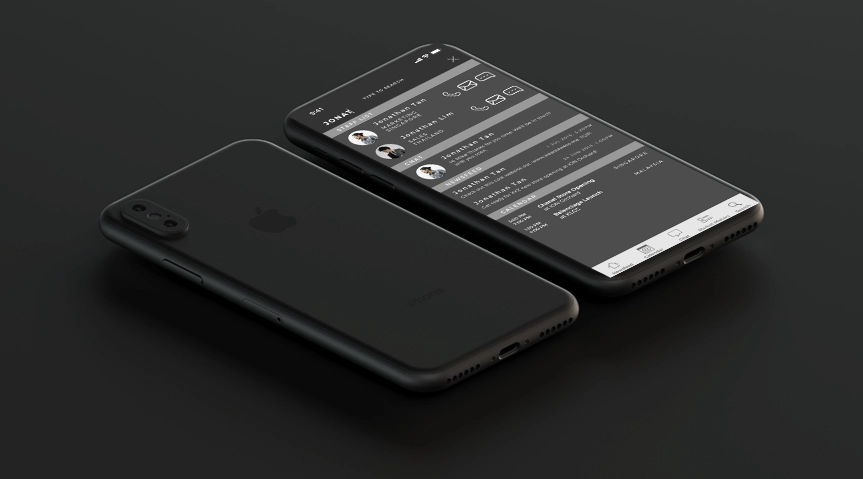These days, almost everyone has an idea for the perfect app, the app that could make a difference – at least to their minds. However, as with many, those with brilliant ideas are often stumped as to where to start.
In order to address this problem, here is a small but complete guide to building a mobile application startup to help get you started. Much of this information is drawn from years of experience as well as getting ideas and inspiration from businesses and magnates who have already achieved success and have marketed their mobile app startups.
This is not by any means an end-all and be-all guide. As with everything, this is merely a guide to help get started.
This step-by-step guide focuses mainly on app development for startups. If some steps are already done, there is no need to do it once again.
First Step – Validate Your Idea
This is perhaps the most important step as soon as you have your idea for the mobile app startup. Up until your application is on the market and customers start buying from you, your idea is actually still just a hypothesis. So there is a need to validate your idea.
To do this, you can use Google Keyword Planner to check for the number of people who are looking for what you are trying to create. This allows you to initially scope out your market and see if there is really a demand for your application or not. Another method is to create a landing page that really highlights your proposal. The important feature of this landing page is to create user interest through allowing users sign up via email to get updates.
Alternatively, you can opt for custom application development to create a minimum viable product (MVP) that offers the core value of your idea. This MVP can help you gauge how much interest there is in your app, giving you the data needed to refine and improve your concept.
Second Step – Create Wireframes
After validating your idea, you should now have a concept that people actually want to use. The next step in app development for startups is to transfer your ideas onto a document. Some people just use regular word documents, but if you want to go an extra step further, you canmake use of wireframing tools such as Proto.io or JustInMind.
When conceptualizing or putting down your ideas into the document, make sure that every detail is noted down as much as possible. It is also important to include the perceived flow of the app and how the user would be able to navigate throughout the app as well. This is on top of listing down the features that you have envisioned. By doing so, you are helping your developer to understand what the app is about, and what are the behavioral expectations.
Third Step – Take Away Non-core Features
Take a good look at the document that you have created. Now, review the features and flow that are noted down, and then review each feature closely and consider which ones you can take away. You need to offer what is known as the “core value” of your mobile application startup idea. For now, there is no need to build all the features you have listed down on your first version, especially the “nice to have” ones that can always be add-ons for future updates.
For you to be able to bring the app to the market quickly and make sure that the overall costs are within budget, it is extremely important to build what you have noted down as “must-have” features for the first version. These “core value” features must be the exact ones that promise to solve the problems of the user.
Fourth Step – Design Delights
It is very common to hear that most entrepreneurs start off by saying they just want basic design and put their focus on developing applications. However, this is not a good idea.
There is more to design than just thinking about colors, buttons, and graphics. Design takes a step further from simply how applications look, but more importantly about user experience. Even if you have a gorgeous looking application or a basic looking one, if the user’s experience is not favorable, then nobody will use the application in the end.
One of the best ways to look at it is to think of design as a way of helping make technology useful. As such, it is essential for app development startups to ensure that user experience and design is covered.
Fifth Step – Prepare a Brief
Once all of the items in the previous steps have been covered, there is a need to create a brief or a document that is shareable to possible development partners. This is in order to help acquire estimations and pricing.
It is important to think beyond the pricing when making decisions. If you want to get the best done, you need to reach a decision that is best for you and your development partners.
When reviewing the contents of your brief, make sure that the details include the context or background of the idea that you wish to develop. Also include the potential customers, and why they are looking for an app such as the one you are planning to develop. Include as well typical use cases in detail, features, monetization plan, and the wireframes or prototype. This allows your development partners to get a sense of what they are getting into, and perhaps even provide you with more insight and some feedback.
Sixth Step – Hire App developers (UI/UX, Back-end, App Developers, Technical Lead)
When looking for a company to develop the application, go for one that has a solid development team with excellent design talent. Do some research and check for their credibility as well as the applications that they have already developed and launched successfully.
If you browse through their portfolio and find yourself really liking an app that they created, chances are, this development company is the best choice for you. It means that their potential result would be something that you could find yourself using as well.
It is extremely important not to go cheap on your development team. After all, you get what you pay for.
App Development for Startups – The Next Steps
From steps 1 to 5, you now basically have started your mobile app startup. However, it does not stop there. There is still much to do. There are key steps that need to be done in order to get momentum and ensure that the ball keeps rolling.
Below are a couple of points that need to be done to the further development of your mobile app:
-
Analytics. It is important to integrate analytics into your application. This is essential as it helps track the number of downloads made, the frequency and depth of user interaction as well as retention for your app. There are many companies that offer analytic services such as Localytics, Google Analytics, and more. There are some that are free, but limited, while there are also some that are paid but give you more flexibility when tracking. So, take some time to figure out what you want to track before making your choice.
-
Create store developer accounts. In order to sell your application, you must take time to register for developer accounts. This is for both Google Play store and Apple’s App Store. When registering, you have an option to sign up as a company or an individual. So if you already have a company formed, then it is possible to use that identity. Take note that this is not free, but it is also a small price to pay for getting your app into the market.
-
Keep on growing and improving. Once the app is “live” on the app stores, the initial customer behavior and usage will shed some light on how to improve and enhance your app. Take this valuable information into consideration when making decisions for the next steps, features, or changes that your app might have. Keeping an eye on user feedback is important as changes are constant, although it is also important to keep in mind that not all feedback might be useful. But let these user thoughts be ideas for improvement. After all, your app aims to solve user problems above all.
Important Notes
Often, when focused on app development for startups and consumed with having an idea that could catapult you into success, there tends to be an oversight of several things. These things often could be helpful in getting through the journey with all its ups and downs.
To cap off this guide, here are some notes that will help guide you to be more conscious of the small things. If you take note of these things, it could boost your chances of success, and help you get a better grasp of what is going on.
Users will not automatically use your app just because it is available
A lot of people think that the job is done as soon as the app is complete and has gone live on the app store. This is not the case, unfortunately. Building the app is perhaps the easiest thing to do on your path to building a business. The biggest challenge is in getting customers to use your application, and use it consistently.
Take time to think about a clear marketing plan which would get you your first hundred, thousand, or ten-thousand customers. If you manage to hook these early users, then you will be able to determine if your application is a hit or not, if it is favored by users or easily rejected.
There are a number of instructions found on the Internet that can help create a marketing plan. As it is, not everybody is adept at marketing, but one can always learn.
Validate first, do not raise funding yet
While it is important to acquire funds, it is also one of the toughest items on your to-do list. When you want to dive into app development for startups, focus first on building the product and then getting customers.
Your main goal should be to put the application on the market even without the security of having funding. Your ambition in creating your startup should not be dependent on the venture capital, but on your drive and determination for success as an entrepreneur.
These days, most venture capitalists do not look towards the methods of traditional software companies. Demos and first versions of applications are now often created at hackathons within a few days. Ideas rise and fall in a short amount of time, but these venture capitalists often look for the ideas that have already been tested by users and exhibit growth when it comes to user signups and retention. All that needs to be considered before they think about investing.
Do not ask your friends for feedback
Unfortunately, friends have a tendency to be biased. Do not ask your friends for their feedback on a product that has not been realized yet. While friends are well-meaning, they often do not bear the consequence of their input. If you need feedback or validation, get it from the users who are paying to use your app. They are the ones who have put their money and faith into the application that you have created.
Keep your job – for now
If you have an idea and are looking into app development for startups, you can start working on this idea while you still have a job. After all, there are bills to pay, among other things. It is not necessarily employee OR entrepreneur. Most successful entrepreneurs started while they were employees as the methodical transition is possible. That way, a seamless move from employee to entrepreneur can be done.
Once you get some traction on your mobile application, and you are able to increase marketing scales to a larger effort, plus you are in the market for investors and growing, then you may be ready to take the leap.
It is important to make a decision at the appropriate time, which is right about the time you feel it is necessary to scale up or die.
With over 10 years doing app development for startups, Saigon Technology hopes that our knowledge sharing above is helpful for you in your startup journey! All the best!





